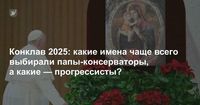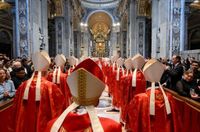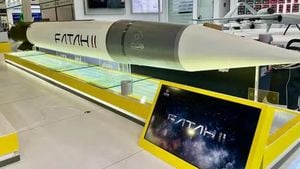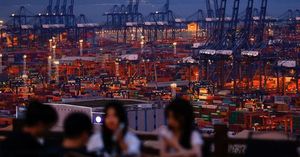The Vatican is preparing for the upcoming conclave on May 7, 2025, with a blend of ancient traditions and modern technological security measures, creating a unique environment for the election of the next Pope. This conclave will not only involve the physical isolation of the cardinal electors but also a stringent ban on modern communication devices to ensure the secrecy of the voting process.
According to the Apostolic Constitution Universi Dominici Gregis, promulgated by Pope John Paul II on February 22, 1996, the procedures for the conclave have been significantly updated to reflect contemporary technological realities. For the first time during the 1996 election process, mobile phones were officially banned, a decision that has evolved into a comprehensive set of restrictions aimed at preventing information leaks.
As the conclave approaches, the Vatican is facing unprecedented challenges posed by advances in technology, including artificial intelligence, drones, military satellites, and even microscopic microphones. These modern threats have prompted the Church to enhance its security measures, which traditionally relied on physical isolation and personal oaths.
During the conclave, there will be a strict prohibition on various technologies to prevent any information leakage. All mobile devices are completely banned, and cardinals must surrender their phones before entering the Sistine Chapel. In fact, mobile communication in Vatican City will be disabled starting from May 6, 2025, at 15:00 local time. This measure is aimed at ensuring that the cardinal electors are not influenced by external factors.
Moreover, any devices capable of transmitting or receiving signals are also prohibited. This includes not only mobile phones but also outdated devices like electronic organizers, tablets, and smartwatches, all of which will be confiscated upon entry.
In addition to communication devices, equipment capable of recording events during the conclave is strictly forbidden. This includes audio and video recording devices, cameras, televisions, and radios, all of which are banned to avoid any external influence on the cardinals. Printed materials, such as newspapers, are also prohibited to eliminate the possibility of external information affecting the decision-making process.
The main goal of these stringent measures is to ensure the secrecy of the conclave, protecting the sanctity of the voting and discussions that take place. The Vatican takes these precautions very seriously, employing various methods to ensure that no electronic device can function during the election process.
According to Wired, among the mechanisms to ensure isolation are signal blockers that prevent mobile phones and radios from functioning. The Vatican will be completely isolated from mobile communication starting from the specified time, and the Camerlengo is responsible for conducting thorough checks with technical specialists to identify any potential eavesdropping devices. The chapel is transformed into a kind of 'Faraday cage', effectively blocking any signal penetration.
This prohibition of technology during the papal conclave exemplifies a unique combination of ancient traditions and modern security measures. The Vatican is creating an electronic isolation around the election of the Pope to guarantee the secrecy and unpredictability of the electoral process.
On the morning of May 7, the conclave officially commenced with a Holy Mass for the election of the Roman Pope, presided over by Cardinal Giovanni Battista Re, the Dean of the College of Cardinals. In his opening prayer, Cardinal Re invoked God's guidance for a shepherd who will be pleasing to Him by his holiness and devotion to the Church.
Cardinal Re emphasized the importance of unity and prayer among the cardinals as they prepare for this momentous decision. He reflected on the readings from scripture, connecting them to the responsibility of the cardinals to choose a leader who embodies the qualities of love and self-giving necessary for a pastor.
He noted that the election of a new Pope is not merely a change of personnel but a return to the mission of the Apostle Peter, representing Christ on Earth. The cardinal-electors will cast their votes in the Sistine Chapel, a setting that enhances the awareness of God's presence during this significant moment.
As the conclave unfolds, the world is watching closely. The newly elected pontiff will have the option to adopt one of the existing throne names or choose a new one, as was the case with Pope Francis. The name chosen may provide insight into the priorities of the new papacy.
Throughout history, the Catholic Church has appointed 266 popes, beginning with the Apostle Peter and encompassing approximately 80 throne names. While many popes have retained their baptismal names until the 10th century, the tradition of adopting a new name has become established over time.
The names selected often reflect the historical and political context of the period, as well as a desire to honor previous popes or saints. Notably, in 1978, Patriarch Albino Luciani chose the double name John Paul to honor his predecessors who led reforms during the Second Vatican Council.
As the voting process begins, the cardinals will be keenly aware of the legacy they are stepping into. They will consider the significance of their choice not only for the Church but also for the wider world, which looks to the papacy for guidance on fundamental human and spiritual values.
The anticipation surrounding this conclave is palpable, as many wonder what direction the new pontiff will take. Will he continue the legacy of reform and social justice established by Pope Francis, or will he lean towards a more traditionalist approach? The answers will soon be revealed as the cardinals embark on this sacred and solemn responsibility.
In this pivotal moment for the Catholic Church, the blend of ancient traditions and modern challenges sets the stage for a conclave that promises to be both historic and transformative.





